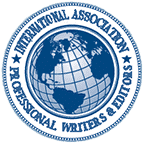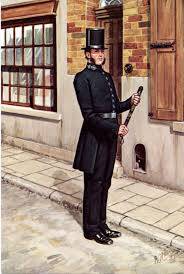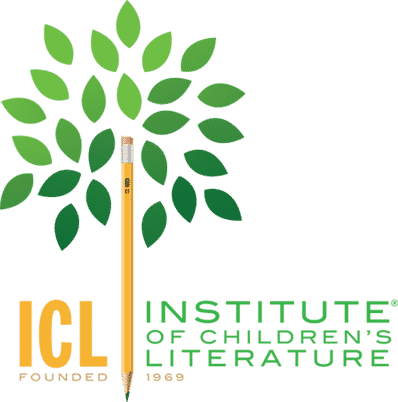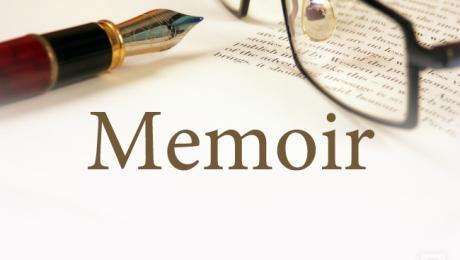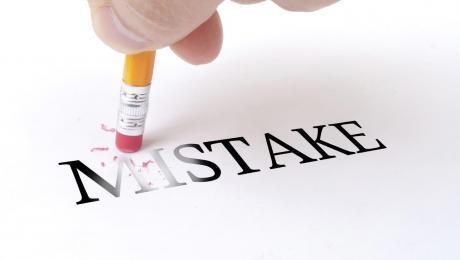The Establishment of the London Police Inspired the Creation of Detectives in British and American Crime Fiction
Until 1829, crime prevention in London was the responsibility of a cadre of men working for magistrates’ courts, parishes, or local divisions. In response to increasing crime and unrest, a parliamentary committee in 1812 recommended putting a unified force throughout the capital, although the Metropolitan Police wasn’t formed until 1829.
Before the Metropolitan Police came the Bow Street Runners, who served the magistrate at Bow Street, Henry Fielding and then his half-brother, John. The Runners pioneered systemic crime investigations through information-gathering. The Runners also had horseback and pedestrian patrols.
By the 1820s, their reputation suffered because of association with unsavory people to retrieve stolen property. They were disbanded 10 years after the police force was established in 1829.
The new force wore blue uniforms to distinguish themselves from the red uniform of the army. Initially its role was crime prevention, until a long delay in finding a murderer led to the creation of a department of crime-solving detectives. Scotland Yard became shorthand for detectives, but it was actually the address of the police force headquarters.
Charles Dickens and the Bleak House Detective
Charles Dickens created the detective character Mr. Bucket in his novel, “Bleak House.” He was modeled after a real person. The character was a hit with readers, so more stories with detectives emerged from other writers.
Other Writers Follow
Wilkie Collins’ “The Moonstone” was published in 1868, preceded in 1862 by “Ruth the Betrayer” with the female detective Ruth Trail working in a Secret Intelligence Office established by a former police officer.
Another female detective appeared later in “Revelations of a Female Detective” by Andrew Forrester. In “The Boy Detective,” Ernest Keen emerged in the penny-dreadfuls.
In 1840s, the First Detectives in America Emerged in Boston
Boston detectives were modeled on what had been introduced in London, but the Boston police department was established later, in 1854.
Poe Inaugurated Crime Fiction in 1843
In America, the first crime fiction was “The Murders in the Rue Morgue” by Edgar Allan Poe, published in 1841. In 1855, Emile Gaboriau’s crime novel, “L’Affair Lerouge” was published and became very popular. The first American-based story, “The Leavenworth Case” by Anna Katherine Green was published in 1878. Her book was preceded by the translated French book, “The Widow Lerouge” in 1878.
A deluge of detective fiction followed the 1887 story by A. Conan Doyle, “A Study in Scarlet,” published in The Strand, a popular magazine. Since then police detective fiction has become a global phenomenon.
- Published in Writing & Editing Resources
The Institute of American Indian Arts Nurtures Native American and Indigenous Writers
The Santa Fe-based Institute of American Indian Arts (“IAIA”) provides a Native American art and culture-centric curriculum. Since 2012, the IAIA has offered a MFA in creative writing. In 2014, IAIA established a bi-annual writers’ festival; and in 2017, it awarded its first Sherman Alexie Scholarship of $7,500 per semester.
A Unique Institution
IAIA is the only multi-tribal higher education institution in the country, originally established in 1962 as an art-focused high school. This unique institution is dedicated to the study, creative application, contemporary expression, and preservation of Native American culture and art. Indigenous students from the U.S, Canada and other countries benefit from what the Institute has to offer.
IAIA also offers Associate and Bachelor degrees in Indigenous liberal studies, creative writing, the cinematic arts and technology, studio arts, and museum studies. The MFA program in creative writing is a low-residency program (requiring five residencies) that also provides off-campus online education.
MFA in Creative Writing
The MFA in creative writing program allows writers to work on their craft and learn more about the process of getting published and associated issues. Sherman Alexie teaches for the program, and do two of its first graduates, Terese Marie Mailhot and Tommy Orange. Mailhot and Orange are also the authors of the critically acclaimed “Heart Berries,” a memoir, and novel “There There,” respectively.
First Sherman Alexie Scholarship Recipient
The Sherman Alexie Scholarship’s first recipient, Jamie Natonabah, a Diné, is an alumnus of the IAIA, whose favored medium is poetry. She already has a distinguished resume. She is a winner of the New Mexico Slam Poetry Competition. “Red Ink: An International Journal of Indigenous Literature, Arts & Humanities” has published her work. She has also contributed to “Bone Light” and “Fourth World Rising,” two of IAIA’s literary anthologies.
Chelsea Hicks Bryan, an Osage, and Grace Randolph, a Wampanoag, were selected as runner-up and third-place recipients of the award, respectively. The MFA program provided more than $200,000 in scholarship money in 2017, including the Alexie scholarship.
Applicants for the annually awarded scholarship must belong to a Native American tribe or First Nation and submit a work sample. The deadline for the 2018 award was February 15.
The IAIA provides terrific Associate, BA, and MFA programs for Indigenous writers to help them improve and refine their skills. Since the 1970s, Native American writers have increasingly published their work for an English-reading audience. The IAIA wants to build on that foundation and nurture more talent by offering dedicated educational programs. However, since its expertise is also open to non-American writers, Indigenous writers who may not have such educational opportunities in their home countries should take advantage of IAIA opportunities.
- Published in Writing & Editing Resources
Popular Crime Fiction Sub-Genres
Crime fiction usually involves solving a mystery or why it occurred (such as “Crime and Punishment” by Dostoevsky and “Chanson Douce” by Leila Slimani). Crime fiction captivates readers by engaging their curiosity and desire to solve puzzles, and providing escapist entertainment that offers a break from their mundane lives or touches an inner fear they have harbored (for example, untrustworthy mates, killer nannies, and death by medicine).
From Poe to a Niche All its Own
Since the 1841 publication of Edgar Allan Poe’s, “The Murders in the Rue Morgue,” crime fiction has blossomed to become a genre with an ever-expanding community of writers. A US phenomenon before it crossed the Atlantic, crime fiction was a recognized genre by the 20th century.
The Sub-Genres of Crime Fiction
The genre has evolved over the years to include several sub-genres. The most popular sub-genres are:
The Cozy Mystery—In this sub-genre the detective is usually not a professional, the violence is not graphically described and usually not visible, and the story often has a small-town or rural setting. The sleuth is typically an intuitive and intelligent woman whose professional connections may aid her deductive skills. In this genre the focus is on character development and plot. Think Agatha Christie and her Miss Marple character.
General Suspense—This usually involves an ordinary person whose need to solve a problem sometimes involves finding a way to exonerate themselves. Think Gillian Flynn, Lee Child, and Dennis Lehane.
Private Detective Stories—In this sub-genre, the detective often works in a notable city, and there is explicit violence. Think Mike Hammer, the detective imagined by Mickey Spillane. Modern examples include Sue Grafton’s character Kinsey Milhone, Lawrence Block’s character Matt Scudder, and Janet Evanovich’s character Stephanie Plum.
Police Stories—Think James Patterson’s character Alex Cross, Ian Rankin’s character Rebus, and Michael Connelly’s character Harry Bosch. The protagonists’ stories include professional and personal issues, not just the actual crime that sets the stage.
Legal Thrillers—Think Scott Turow’s and John Grisham’s stories. The writers are often trained lawyers with a talent for creative writing. For example, Turow not only once taught creative writing at Stanford but is also a Harvard Law School graduate.
The Medical Thriller— These are usually set in a hospital, and the story involves medicine or its effect on an actual character. Think Michael Crichton, Robin Cooke, and Tess Gerritsen.
The Forensic Thriller—Such stories usually have a protagonist who is a pathologist or a scientist. Think Patricia Cornwell, Jeffery Deaver, and Kathy Reichs.
The Military Thriller—In this sub-genre the protagonist typically is in government service or a former serviceman. Think Tom Clancy.
Writers who want a career should try crime fiction. To write proper crime fiction, read crime fiction. Joining a writing group or an association, signing up for one or more workshops, and taking classes will also boost writing skills.
- Published in Writing & Editing Resources
Take Advantage of the Excellent Guidance provided by The Institute of Children’s Literature
Children’s literature has been a distinctive genre for more than two centuries. However, it has arguably never been as popular as it is today. For trade-specific knowledge needed to succeed in writing for this genre, you need a reputable source of guidance.
About The Institute of Children’s Literature
The Institute of Children’s Literature (“ICL”) provides stellar education for writers who want to write for a young audience. ICL provides guidance that covers all the subgenres and angles of writing for children and young adults.
The ICL has helped writers become better at writing for young readers since January 1969. In addition, ICL provides expert guidance about optimizing marketing. An average of 300 ICL students per year have their writing published.
One-on-One Instruction
ICL offers rare one-on-one instruction and guidance by a writer or editor experienced in the craft of children’s literature. Instructors develop their teaching plans based on students’ skill levels.
ICL Course Offerings
The coursework is designed for anyone who is interested in writing for a young reader, including parents, working professionals, and individuals who require flexibility.
Current courses are Writing for Children and Teens; Breaking into Print; Shape, Write and Sell Your Novel; and advanced courses: Beyond The Basics: Creating And Selling Short Stories and Articles and Writing And Selling Children’s Books;.
Learn from Experienced Professionals
All ICL instructors are published writers or editors. They have written a combined total of more than 900 books as well as more than 20,000 articles and stories that have been published by newspapers, national magazines and online. ICL matches its students with instructors according to student interests and needs. Placement depends on whether the student intends to write fiction or nonfiction, books, short stories, articles, or a combination thereof.
ICL’s Satisfied Students
On its website, ICL reveals that 89.7 percent of its graduate students were “very satisfied;” 98 percent would repeat the course; and 97.7 percent would recommend ICL to a friend.
Author Submissions for Feedback
The ICL is located in a beautiful Connecticut mansion. Writers can also submit writing for critiques through its website. People who cannot come to the physical location but would like feedback and marketing guidance can use the online resource.
A Weekly Informative Podcast
ICL’s director hosts the Writing for Children podcast. The podcast discusses the craft of children’s literature, including how to write a book, how to write for magazines, how to earn income, and how to get published. ICL experts answer listener questions. In addition, the show notes provide hard-to-access resources and useful links.
If you have stories you want to write for young readers and wish to excel in the genre, you will benefit from ICL’s expert guidance. Visit ICL’s website to learn more about the Institute and what it offers for writers in the Children’s and Young Adult Literature genres.
- Published in Writing & Editing Resources
Getting in Touch with Your Creativity as a Writer
If you are an avid fiction writer, then you have probably run into the problem of writer’s block once or twice. Lack of inspiration is the most potent enemy to a writer of any kind, but especially to one who relies on original tales and stories of fiction. Still, there are a number of ways you can get your creative juices flowing again, no matter how tapped out you feel.
Writers have a tendency to become stagnant in their work. They feel that the assignment at hand must be done as soon as possible, as many face impending deadlines for their work, but the fact remains that sitting behind your desk in your office is actually counter-productive to the creative process. To get the creative juices flowing, it is always a good place to start to get your actual, physical juices flowing: your blood. Try taking a short brake and going for a half an hour walk. We do some of our best thinking when we are walking, because we are getting more oxygen to our brains than by sitting behind a desk writing or typing.
Keep in mind that being sedentary is the enemy of creativity. Another thing you could do to combat mental and physical lethargy is to change your setting. Your desk and office may be the most congenial place for you to write logistically, but it may be stifling your imagination and creative capacities. If at all possible, set up shop in your backyard, on your deck, or at a nearby park. Try writing outdoors or simply change your work scenery to gain a different perspective.
This next pointer may be the most powerful yet: tap into your dreams. Even if, in your waking life, you are finding it hard to think creatively or come up with something new, chances are your subconscious mind is not having the same problem. It can be difficult, with your schedule, to record your dreams when you wake up in the morning, but give it a try. You can start by keeping a small notebook and a pen near your bed, perhaps on your nightstand every night. Wake up 15 minutes early every morning to give yourself time to simply lie in bed and think about your dreams. Close your eyes and try to recall every detail as best you can, no matter how seemingly inconsequential. Write everything down in the notebook—everything! This is the time where you should be a free-form recounting your dreams, and you can sift through the details and what is incomprehensible later.
You may get an idea for a new story form your dreams or maybe some valuable insight into a story you are already writing, as our dreams are often cryptic messages to us about things that are going on in our waking lives.
- Published in Writing & Editing Resources
Writing a Compelling Memoir
We all have stories to tell, from an awkward first kiss to overcoming a devastating illness. Memoirs are an excellent means of sharing the intriguing bits and pieces of our lives that have shaped who we are today. If you are ready to begin your own memoir, here are some tips to get you writing in the right direction.
Be Specific
A memoir is not an autobiography, which means that it should not cover your entire life. The objective of a memoir is to highlight a specific time period in your life or a specific event you experienced. Your memoir represents a single morsel or slice of your life.
Be Honest
Be truthful about the events you are describing. It might be tempting to write yourself in a more flattering light, but the memoir is not a work of fiction. Stick to the facts. It is perfectly okay to tell your story in an interesting way. Just be sure to avoid rewriting history. Telling tall tales is for fiction and readers will be skeptical anyway if you always have the right comeback at the right time.
Draw on Fiction
While it is important to be truthful in memoir writing, you still want the story to be interesting to readers. Try applying elements of fiction writing to your story without actually fictionalizing it. This can help you achieve a memoir that is both readable and memorable.
One place to start is with the people in your memoir, including yourself. Write about the individuals in your story as if they were characters in a novel. What are their struggles? Do they have any distinct characteristics? Draw on those aspects of the people in your story to help readers get to know them.
It Isn’t About You
It might be your memoir, but it should not necessarily be about you. Readers want to know what’s in it for them. What lessons can they learn from your story? What can they take away from it? Even though you are sharing an event or situation from your life, you do not want to sound like you’re just talking about yourself. Readers will quickly lose interest. Writer and instructor Marion Roach Smith says it best. “The best memoir is about something, and that something is not me.” Illustrate a universal theme, such as spirituality, through your memoir.
When composing your own memoir, remember to focus on a specific event or time period, stick to what really happened, utilize elements of fiction for interest, and emphasize a theme or lesson rather than yourself. Employing these tips in your memoir will make it one people want to read.
- Published in Writing & Editing Resources
Do Your Business Writing Skills Need Improvement?
There is value in writing well. Even if you are a multi-tasking, frequently-under-stress executive, making time for better business writing is worth it. It is not frivolous or tiresome; indeed, communicating effectively will benefit your career. See below for some tips to get you started.
Think First and Write Afterwards
Your communications need to be engaging and plain-spoken, so that your style of composition does not burden busy people. Effective writing is a cultivated skill. Do not write prematurely; think first about what you want to communicate. People who think as they write do not convey their thoughts clearly. Their communications lack structure. Be thoughtful, and avoid haste. Consider what your reader (or readers) should think or know after receiving what you sent.
Do Not Bury Your Point
Present the main idea first. Impactful business writing has clarity. Summarize your point in the beginning regardless of whether you write a memo, proposal, or an email. It will help you better craft your argument/communication. You will save your audience’s time, and your writing will stand out by being direct.
Avoid Padding Your Message
Emails should be brief, clear, and specific. The beginning sentences should let the reader know about the rest of the message. You will capture the attention of busy professionals by giving them a brief summary of the contents in the opening of your message.
Each word should matter. Be concise. Get rid of filler words and phrases. Grandiose language reflects verbosity, not intelligence. Convey the objective clearly. Use stronger action verbs, and remove prepositions for more direct language.
Avoid Acronyms and Jargon, Where Possible
Industry-specific jargon and acronyms may be necessary sometimes, but when used frequently they indicate laziness and bore the reader.
Write with a Natural Tone
Writing that is either stuffy or overly casual hits the wrong tone. Be natural. Write the content quickly, and edit it later.
Review and Edit the Text
Go over what you write. Read your writing objectively, and remove unnecessary words and content. Readers pay less attention to verbose content. When appropriate, ask for feedback from colleagues, especially if you are writing a proposal, report, or an important memo. Other viewpoints will help you improve.
If your business writing is not as clear as it should be, then focus on how to improve it. Put yourself in your recipient’s place, and consider whether what they will receive is what you wanted to convey. If you have the time, read some books about improving business writing.
- Published in Writing & Editing Jobs, Writing & Editing Resources
7 Common Mistakes Made by Novice Novelists
Professional writers of all stripes will agree that writing is both easy and hard. For novelists, the challenge exceeds composing well-written content. Agents reject flawed work. It is better to create a less mistake-riddled work given the high rate of rejection by agents.
Novice novelists make a number of common mistakes. Weed out these weaknesses while drafting the novel. Keep in mind the following common mistakes made by inexperienced writers.
1. An Undistinguished Manuscript
To get out of the slush pile, the novel needs to have a concept, an angle, or a pitch that is outstanding. Think big. Develop an aspect of the novel that makes it fresh, even if you are writing for a genre in which readers expect to see certain elements in their books. If your manuscript is good, but not good enough, do not be surprised by a rejection letter.
2. Extreme or Inefficient Language or Cliché-Riddled Writing
Strong language is useful, when used with discretion. Overuse is off-putting. Make every sentence economical; make your words count. Excessive verbiage is dead weight that hampers the reader you want to impress. Descriptive language or content that is too familiar is a cliché. Keep that in mind, and you will see that agents and editors will appreciate your efforts.
3. Absent or Bland Descriptions
Readers enjoy being transported into a different world. Provide a context and setting that will engage readers.
4. Pretty Prose, Lack of Clarity, or a Literary Writing Fail
Showy language overwhelms content because the disruptive power of pretty prose impedes the flow of the narrative. Optimally, prose clearly and economically conveys meaning. Be aware that sloppy prose may signal sloppy thinking. If you aspire to write literary fiction, competence is insufficient. Literary fiction must be well written.
5. Pointless Detail and/or Distracting Research
Avoid unnecessary details to keep the reader interested. Even if you have done extensive research about the background setting of your fiction, do not smother the narrative with facts. This also applies to information about location and scenery. You are writing fiction, not a travelogue.
6. Plots, Character, and Conflict Weaknesses
Is the plot discernible? Your manuscript should not be a sequence of events affecting your characters or have bland, non-relatable characters. Add depth to your characters with insights into their inner lives or background stories. The backstory provides more information about the character. It can even just hint at the inner motivations of the character.
7. Dialogue and Pacing Weaknesses
Believable dialogue can be challenging for first-time novelists. Read each character’s dialogue to catch inconsistencies. Stick to the same points of view in a scene. Handle the transition from one character to the next carefully in a scene. Uneven pacing makes the narrative disjointed and could turn off readers.
Writing a novel is a major undertaking. The next challenge is to get past the slush pile. Avoid common mistakes to create an outstanding first novel that launches your writing career.
- Published in Writing & Editing Resources
Book Writing Software and Publication Issues
Are you ready to write a book? Do you think getting your book published will be the most difficult challenge? Actually, the hardest part is writing a book, as there are more opportunities than ever before to publish a book. There are also more tools available to make the writing task easier.
Before you begin writing, you need to have your writing tools ready for use. Which one will work for you? The optimal writing tools provide the support a writer needs to become productive.
Software Tools for Writers
Will you use Word, Pages, Nisus Writer Pro, Scrivener, or something else? Scrivener is made for writers and is ideal for long projects. It can also output books directly to self-publishing services. Storyist offers an alternative to Scrivener. Its iOS version enables writing on the go. Storyist also has tools that help writers who intend to self-publish their work.
If you want to use a free tool, consider the open source Bibisco tool for Windows and Linux users. Its capabilities include character development tools and book and scene organization tools. InDesign and Photoshop are useful for creating the visual aspects of the book.
Mobile apps permit writing on the go. Word for iPad, Storyist for iOS, Pages and Quip for iOS, and Google Docs for iOS and Android are all available. OneNote, Evernote, and Pocket are all helpful for research. Trello, a project management tool, helps writers track their work and become more consistent. Go ahead and see what else you can use. Novel Factory, creative writing and other software offer writers many choices.
Self-publishing Sites for Writers
If you plan to self-publish, you have several options. CreateSpace, Author House, and Xlibris are cost-free or come with charges for more supportive services. EBook distribution choices vary with Smashwords, Draft2Digital, PigeonLab, EpubDirect, BookBaby, and eBookPartnership.
Book Proposals for Nonfiction Books
If you want a publisher to publish your nonfiction book, you will need to create a book proposal to pitch your book idea. A book proposal explains why your book, or book idea, is a marketable product. It can be 50 pages or more. Seasoned writers create the proposal before drafting the book. But, new writers may find it easier to write the book before creating the proposal. Do what works best for you.
A Novel Synopsis for Publishers
Agents or publishers want to see what happens in the novel. The synopsis contains the narrative arc of the novel from beginning to end. A novel synopsis is useful because it reveals weaknesses in the plot, characterizations, and/or the structure of the novel. The synopsis also reveals how unique or interesting the story is.
Writing is a process that begins with the basics, before the writer’s creative skills are exercised. Being organized, knowing how you want to publish the book, and preparing what is needed will make the process productive for you.
- Published in Writing & Editing Resources
Establishing a Routine for Productive Writing
Establishing a routine is an essential tool for most writers. Routines are invaluable for writers because they provide structure and allow them to focus on writing. The difference between unrealized potential and being a published author is the commitment to make it happen. Establishing a daily routine is a part of the process.
Learning how to establish a routine that works is a personal choice and depends on the person’s daily activities. If you are a busy person, establishing a routine will make you consistently productive.
Choose a Comfortable Workspace
Writers need an organized and inspirational workspace that is as distraction-free as possible. Your workspace can affect how often and well you write. The ideal workspace will help you to be a productive writer.
Establish a Writing Time and Its Duration
Productive writers often make writing a part of their daily routine. A writer may elect to write for the same amount of time each day or establish how many words or pages get written daily. Sometimes it is better to create a space during the day, either before the daily grind begins or at nighttime before bed.
Select a Playlist for Writing Sessions
Some writers like using playlists. Music can affect the written word, inspire writers to create, and help set the mood. You can stick to the same playlist or change it up. What you choose should make you feel inspired and relaxed.
Keep a Notebook or Virtual Tool for Notes on the Go
Writers get inspiration at unscheduled moments. Even if you have an established routine, a notebook for jotting down ideas is a useful tool. A notebook helps writers make productive use of their established daily writing periods.
If you do not want to carry a notebook and writing utensil around, consider using an online tool like OneNote, Evernote, or Pocket to collect your ideas. You can write when you get the inspiration and not just during your designated daily writing period. When you are in the zone, you should keep going while it lasts.
Keep Material for Reading Inspiration
Keeping other writers’ work handy provides a ready source for inspiration when you need it.
Repetition of a set routine can mesmerize the writer into an absorbed state of mind. Writers who do not have other distractions can get in the writing mode by following a daily routine like writing at a certain time, doing some form of exercise before or after the writing period, or doing something that gets the juices going like listening to music or reading.
Nevertheless, do not become a slave to a routine that does not serve you. The purpose of the routine is to provide you with the space to write productively. If you cannot establish a routine, write whenever you can.
- Published in Writing & Editing Resources
